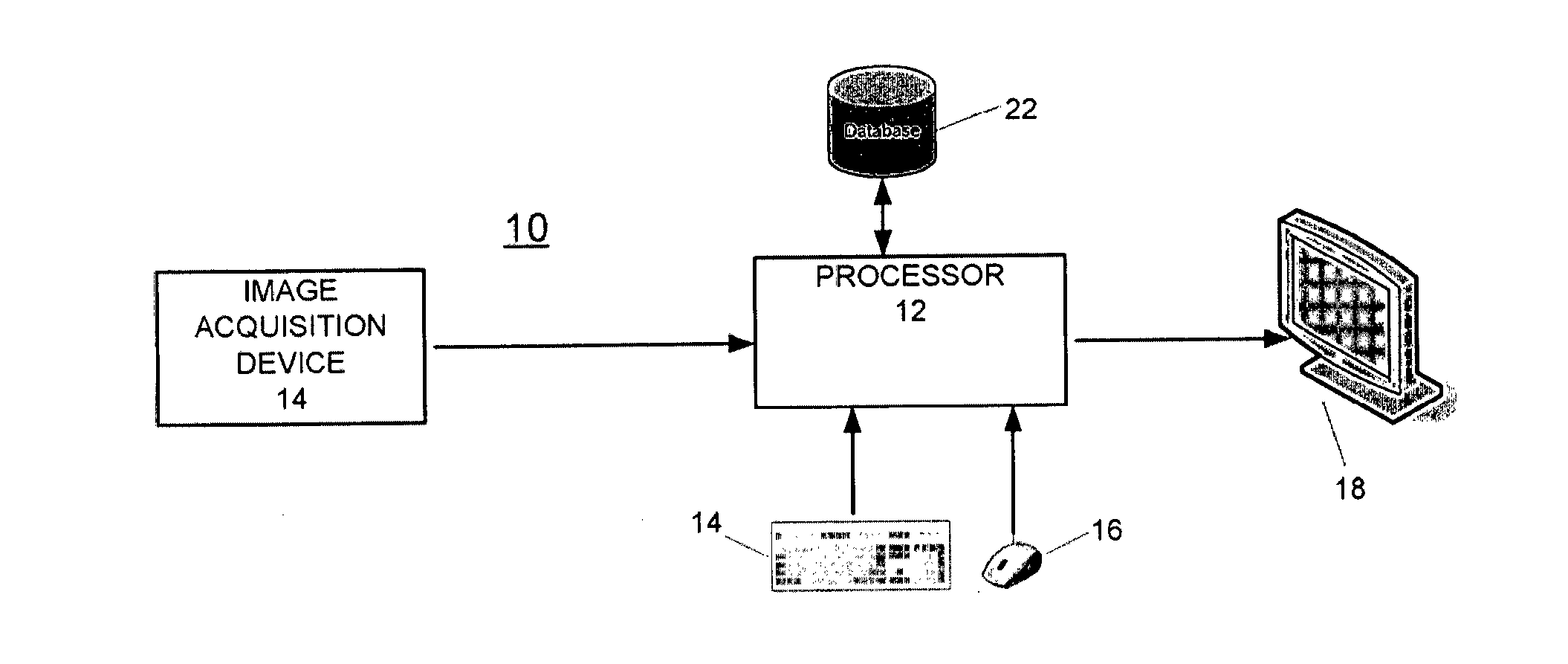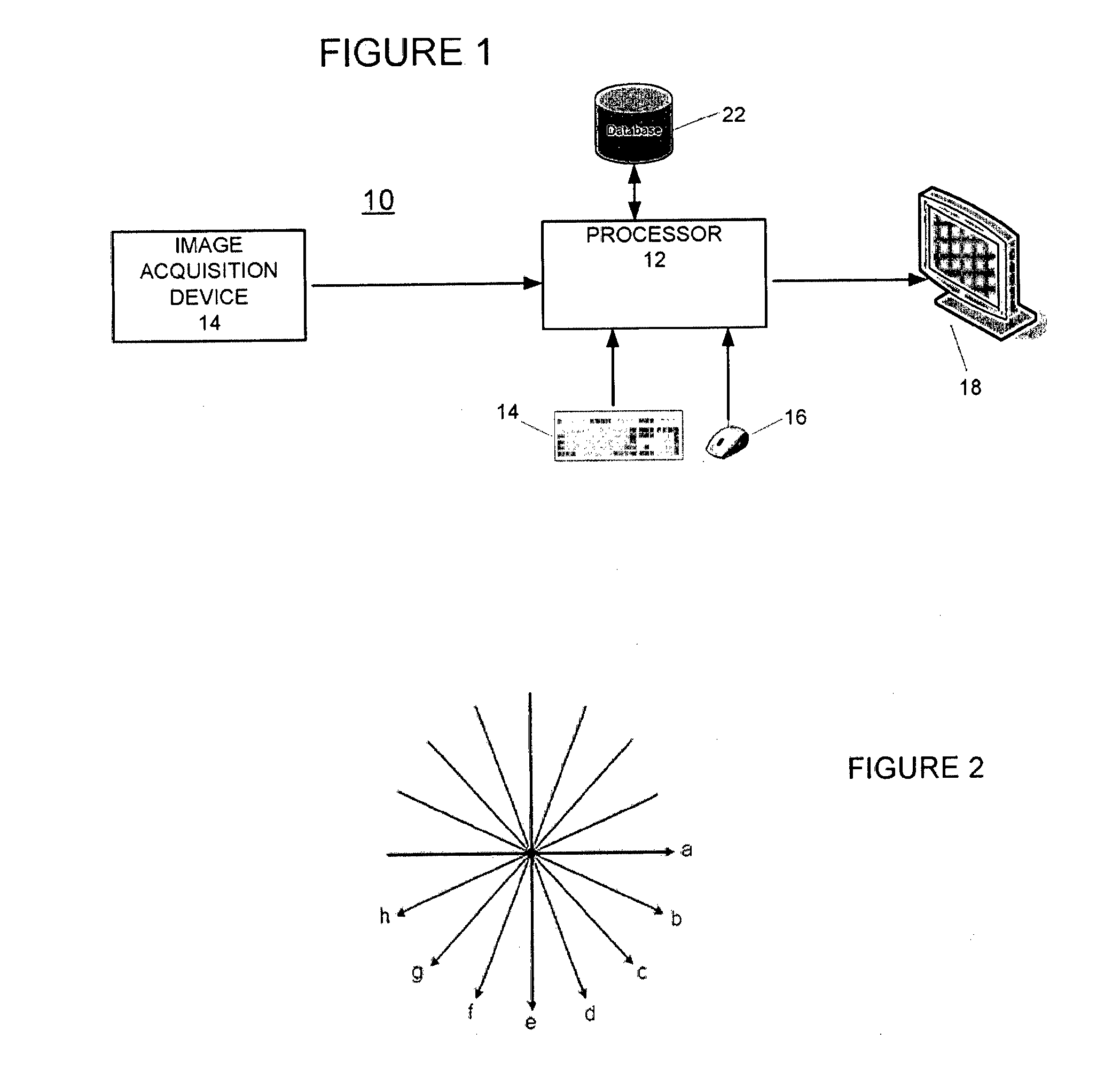Anisotropic Gradient Regularization for Image Denoising, Compression, and Interpolation
a gradient and anisotropic technology, applied in the field of denoising images, can solve the problems of blurring or even removing edges and textures of existing tv regularization techniques, and incurring difficulties in minimizing the norm of gradients along the other direction, so as to reduce the norm of anisotropic gradients and remove image nois
- Summary
- Abstract
- Description
- Claims
- Application Information
AI Technical Summary
Benefits of technology
Problems solved by technology
Method used
Image
Examples
Embodiment Construction
[0013]FIG. 1 depicts a system 10, in accordance with the present principles for accomplishing image denoising using Anisotropic Gradient Regulation in the manner discussed in greater detail hereinafter. The system 10 includes a processor 12, in the form of a computer, which executes software that performs image denoising Anisotropic Gradient Regulation. The processor 12 enjoys a connection to one or more conventional data input devices for receiving operator input. In practice, such data input devices include a keyboard 14 and a computer mouse 16. Output information generated by the processor undergoes display on a monitor 18. Additionally such output information can well as undergo transmission to one or more destinations via a network link 20.
[0014]The processor 12 enjoys a connection to a database 22 which can reside on a hard drive or other non-volatile storage device internal to, or separate from the processor. The database 22 can store raw image information as well as processe...
PUM
 Login to View More
Login to View More Abstract
Description
Claims
Application Information
 Login to View More
Login to View More - R&D
- Intellectual Property
- Life Sciences
- Materials
- Tech Scout
- Unparalleled Data Quality
- Higher Quality Content
- 60% Fewer Hallucinations
Browse by: Latest US Patents, China's latest patents, Technical Efficacy Thesaurus, Application Domain, Technology Topic, Popular Technical Reports.
© 2025 PatSnap. All rights reserved.Legal|Privacy policy|Modern Slavery Act Transparency Statement|Sitemap|About US| Contact US: help@patsnap.com



